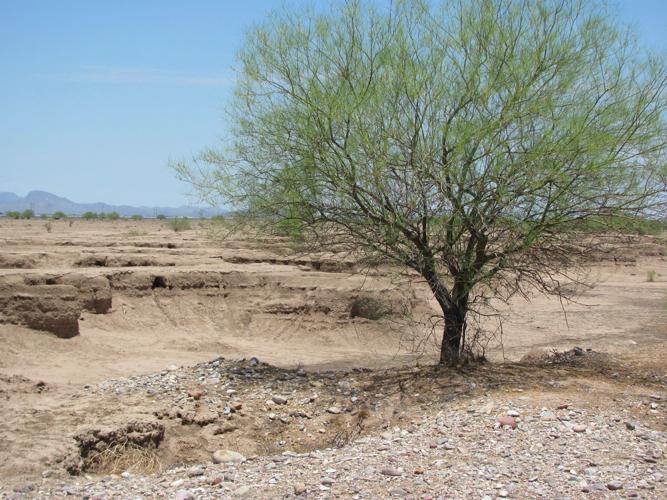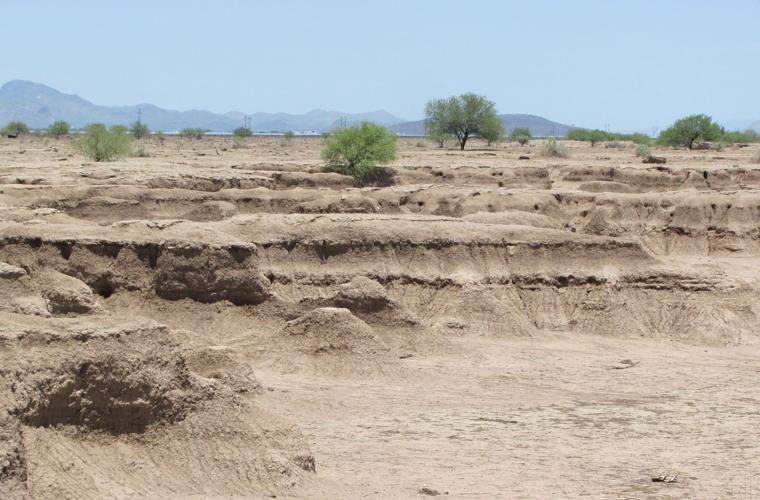The landscape along one stretch of the Nogales Highway south of Tucson might leave travelers groping for a word to describe it.
“Weird” has been used more than once.
Other options:
“Strange.”
“Jumbled.”
“Badlands.”
Lying within an area identified by the Arizona Department of Water Resources as the “Green Valley Land Subsidence Feature,” the site east of the Santa Cruz River appears to be dramatically eroded into a maze of channels and berms. It’s an erosion pattern strikingly different than those along most watercourses.
Land subsidence, according to the U.S. Geological Survey, is a gradual settling or sudden sinking of the Earth’s surface owing to subsurface movement of earth materials. It sometimes occurs when large amounts of groundwater have been withdrawn from certain types of rocks, such as fine-grained sediments.
But experts say land subsidence isn’t necessarily the cause of the eroded landscape in question.
What created the strange, jumbled landscape at the site near mile marker 52 on the highway?
Experts with Water Resources and the Arizona Geological Survey have some ideas, but they couldn’t identify a cause with certainty.
“It looks a little bit like a badlands type of topography,” said Michael Conway, chief of the Geologic Extension Service with the Arizona Geological Survey.
“The land west of the Nogales Highway in that area is badly disturbed by human activity,” Conway said. “That disturbance and erosion is a more likely culprit than subsidence.”
Frank Corkhill, chief hydrologist with the Department of Water Resources, examined photos of the area supplied by the Arizona Daily Star.
“The photos do not look like what we would commonly call an earth fissure,” Corkhill said. “It’s definitely an erosional feature of some sort, but we can’t say what the cause might be.”
He said the landscape features are somewhat similar to sites near San Xavier Mission to the northwest.
Those sites, Corkhill said, might be the result of soil conditions rather than land subsidence.
“Desiccation cracks have been offered as explanations, but not necessarily related to subsidence,” he said. “They are things that can start out as a crack and then get eroded. Whatever the reason for the cracking, it may not be a result of subsidence but of the soil conditions.”
Conway said that such landscape features can be “sculpted out of very poorly consolidated clay deposits.”
Bottom line, according to Corkhill: The possible explanations for what caused the weird landscape are “very general, but it’s about all we could say at this point in time.”





